‘DO NOT TOUCH’: a refrain common to both museums and galleries. But in some cases, touching is the best way of making sense of an object, particularly when that object is a reproduction. This is especially true of plaster casts of ancient Greek and Roman sculptures, of which Oxford’s Ashmolean Museum has a fine collection.
One of the clearest ways to differentiate these casts from their ancient antecedents is to reach out and trace their surfaces, identifying whether cool marble or warmer, dustier Plaster of Paris meets your touch.
Despite this being expressly forbidden by the Museum, clandestine touching does occur in the Ashmolean’s Cast Gallery. Volunteer tour guides interviewed as part of my PhD research at the Museum spoke of visitors knocking on the casts to verify their hollowness. Stroking the taut thighs of the cast of the Belvedere Torso is so common that the object has developed a glossy sheen across its surface. Tactile experience with cast collections thus seems to be something that visitors desire.
With this in mind, I collaborated with the Ashmolean’s Learning team and local Oxford artist Francesca Shakespeare to facilitate a unique kind of haptic encounter with casts. ‘Sculpt, Mould, Cast’ was the result: a three-day practical workshop in which a group of adult amateur artists produced pint-sized plaster casts of their very own.
The artists began their journey into cast making by visiting the Ashmolean’s Cast Gallery. Under the expert eye of Francesca, each artist was invited to make a preparatory sketch of an object from the Museum’s 1000-strong cast collection. Sketching from casts is a truly historic way of engaging with the objects: casts have been used by artists to hone their skills from the reign of Louis XIV (Nichols 2006, 124) to 1852 and beyond, when the British National Course of Instruction of Drawing mandated the study from casts in artistic training (Malone 2010, 164).
With their preliminary sketches complete, the artists were guided through the process of translating their 2D drawings into a three-dimensional form (Figure 1). They produced freestanding maquettes using plastiline, a modelling clay similar to plasticine but with a harder consistency.
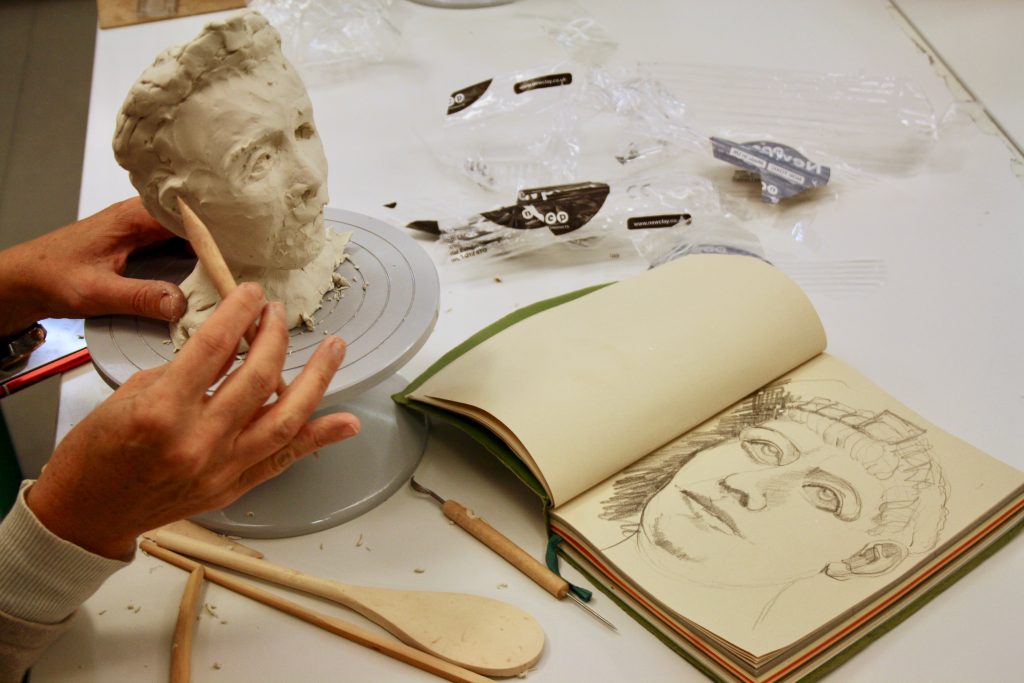
Next came the task of creating a mould of the finished clay maquette. Each plastiline piece was fixed into a plastic container and liquid alginate was poured around it (Figure 2). When the container was full, it was shaken and tapped to remove any air bubbles.
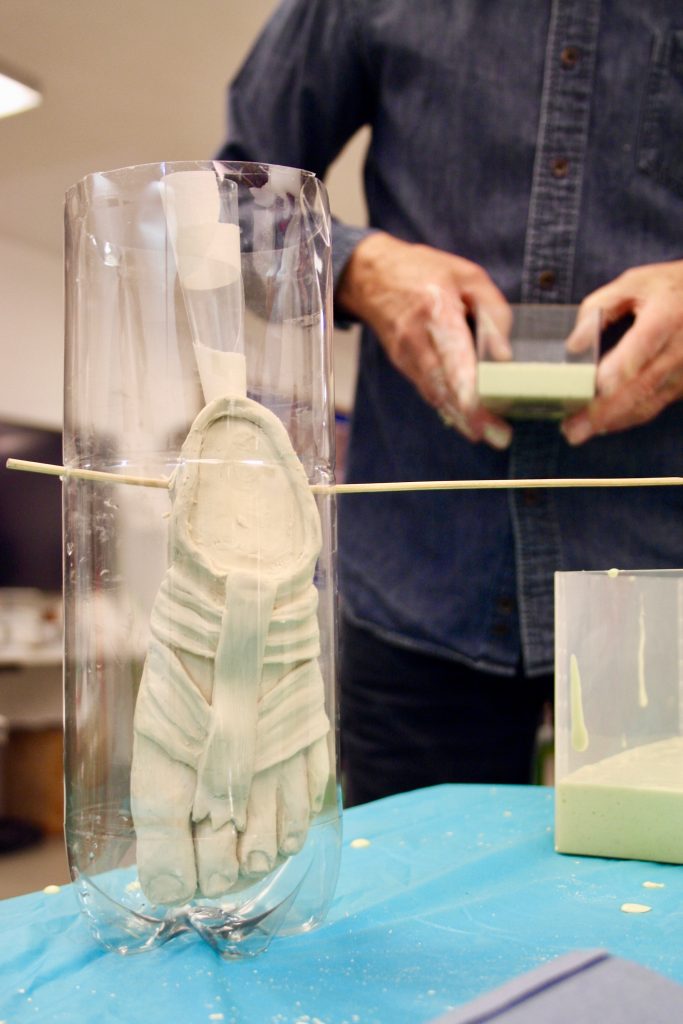
The alginate used will be familiar to any orthodontal patient, for it is the same kind employed to take moulds of teeth before a set of braces is fitted. Even the minty smell is identical! The alginate sets after just a few minutes. Once it was firm and rubbery to the touch, the alginate and the clay maquette within were removed from the container.
The alginate was carefully sliced in half with a Stanley knife and the plastiline model removed (Figure 3). A precise impression of the maquette was preserved in the alginate, which, when reinserted into the plastic container, would act as a perfect mould. Although most of the Ashmolean’s historic cast collection was made using plaster piece-moulds, deformable silicone moulds similar to our alginate variety are also used to produce museum-quality casts. The Ashmolean’s cast of a Fisherman from the ancient site of Aphrodisias, Turkey, was made using silicone moulds.
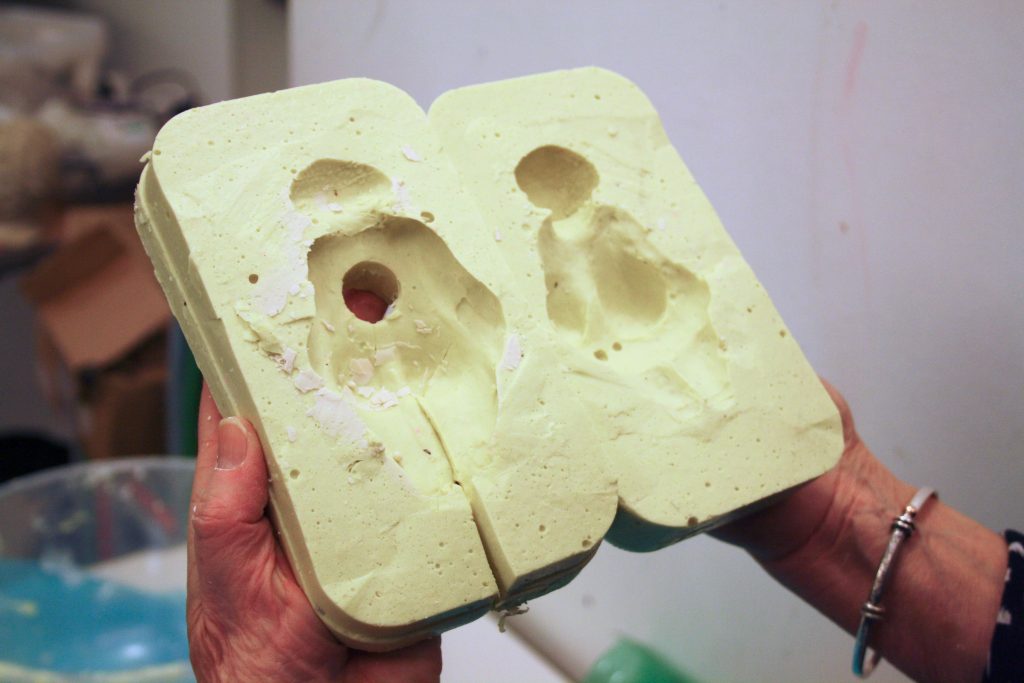
With the mould now ready for use, liquid Plaster of Paris was mixed up and poured inside. It was then left to set for a minimum of 30 minutes. Once the plaster had hardened, the mould was removed from the plastic container and the alginate peeled or cut away to reveal the cast within (Figure 4).
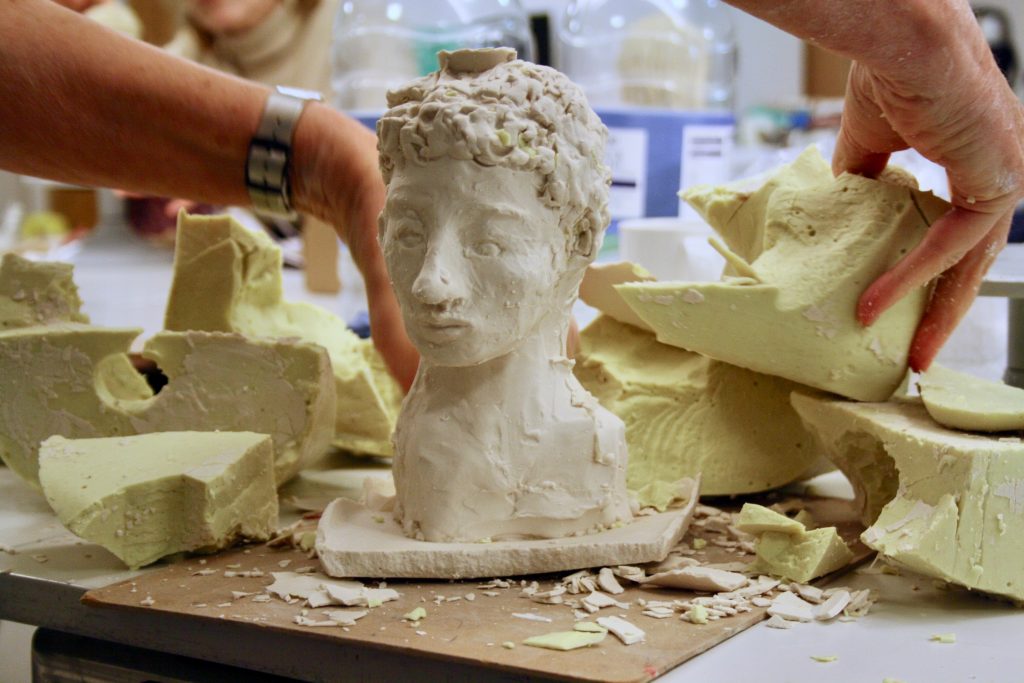
Following in the footsteps of the nineteenth-century formatori who produced much of the Ashmolean’s cast collection, our artists could then choose to perfect the surface of their casts. Using knives or other hand-tools, they were able to remove any pockets of plaster caused by air bubbles or lines that resulted from the mould shifting around during the casting process (Figure 5).
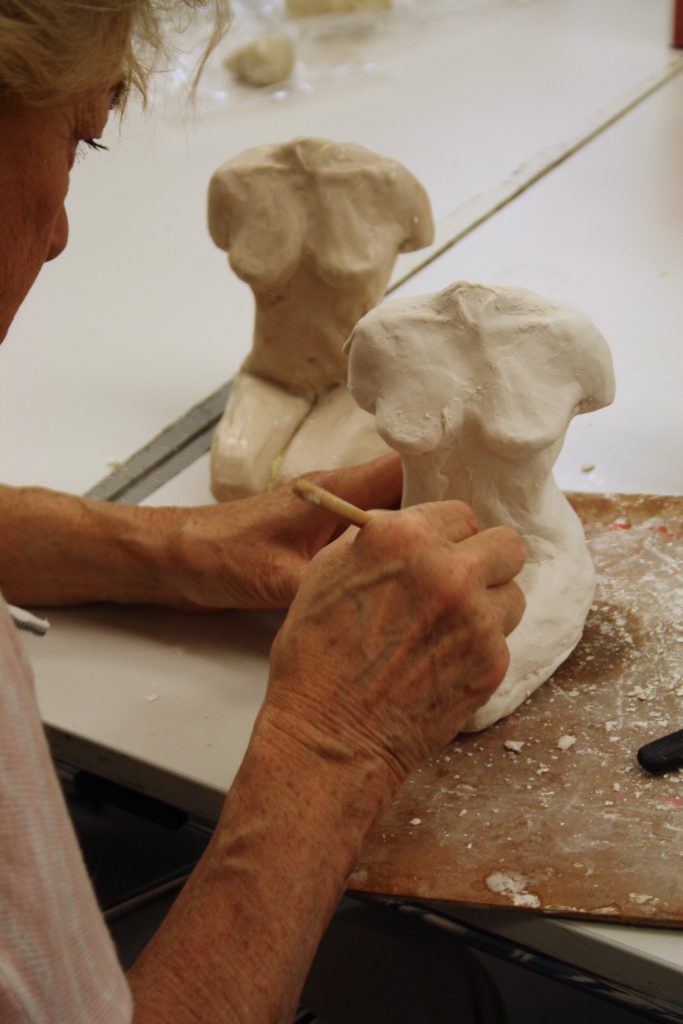
Having achieved their desired surface quality, the artists also had the opportunity to paint their casts (Figure 6). Many objects within the Ashmolean’s cast collection have been patinated to resemble the material of their ancient antecedents. A green/black colour is given to casts made from bronze sculptures, whereas a milky brown shade evokes marble.
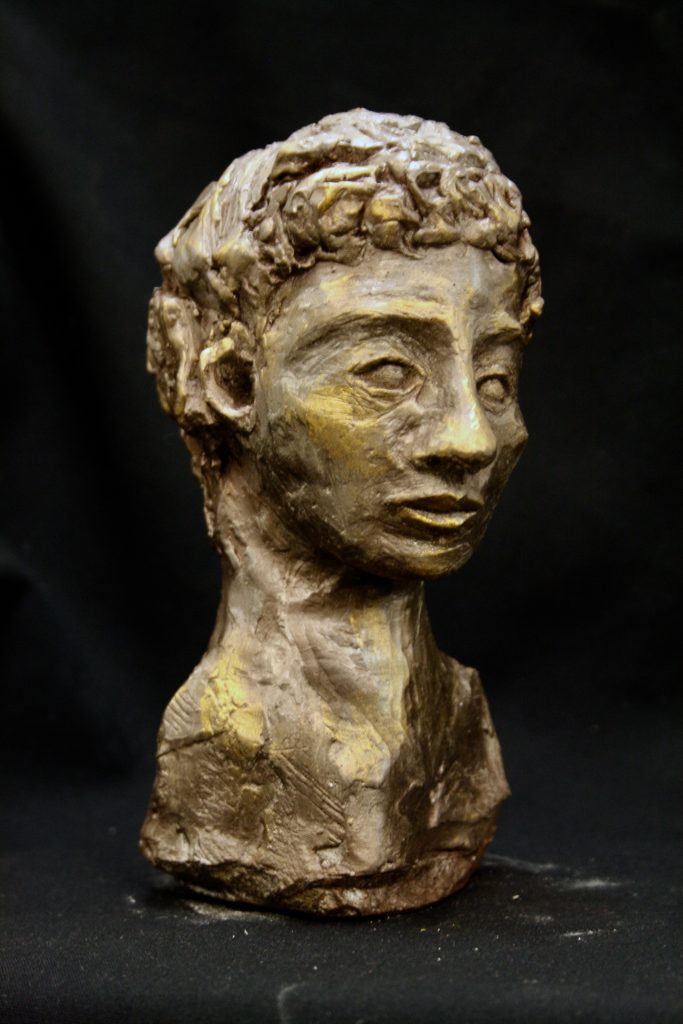
As well as masking their casts’ plaster surfaces with these effects, artists also had the option to paint their pieces in vibrant polychromy. Casts are often used to reconstruct the bright colours of ancient original statuary: the Ashmolean’s displays include a cast of the Augustus of Prima Porta, which is painted with the gaudy hues preserved in fragmentary form on the original.
By the end of the workshop, all attendees had touched and handled plaster in every available state: as a ground powder; in the silky liquid form that is produced when in contact with water; the warm, semi-solid goo in which it sets; and its final dry, chalky, solid surface. This tactile experience was a transformative process for all involved. During the plaster pouring, one artist picked up a blob of plaster in its hot, paste-like form and immediately dropped it with a shout of ‘it’s ALIVE!’ The power of the creative process to produce surprising, perspective-shifting experiences is clear.
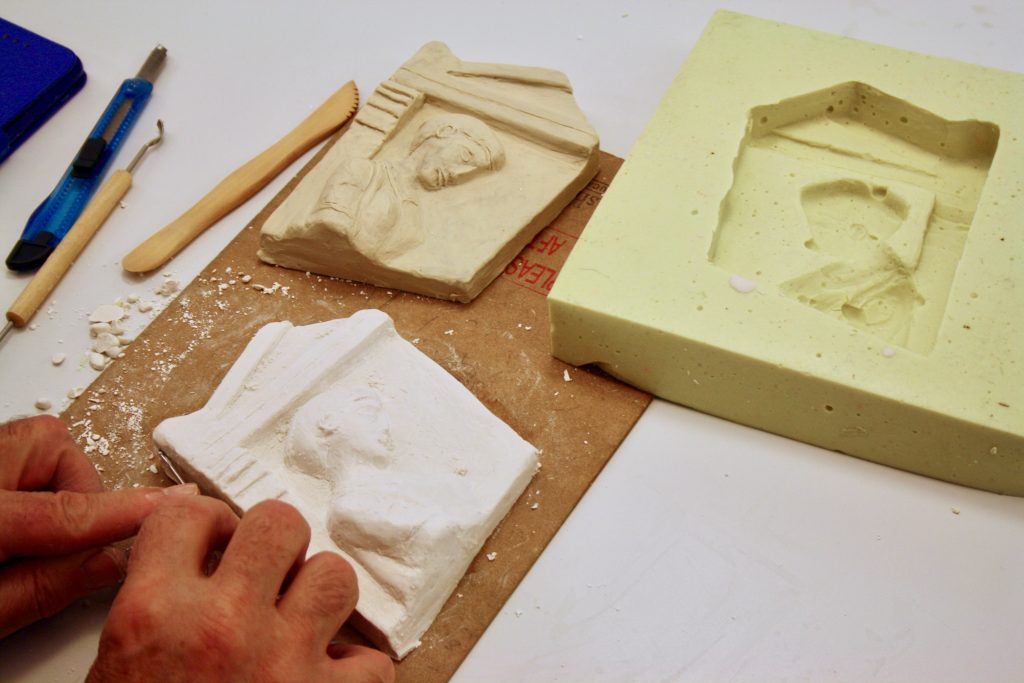
Plaster has so often been described as a ‘dead’ material (McNutt 1990, 161), its ‘dull’ surface unflatteringly contrasted to the alluring luminosity of marble and bronze original statuary (Bilbey and Trusted 2010, 468). But through touch, and through making, we gain a new appreciation for plaster’s power and life.
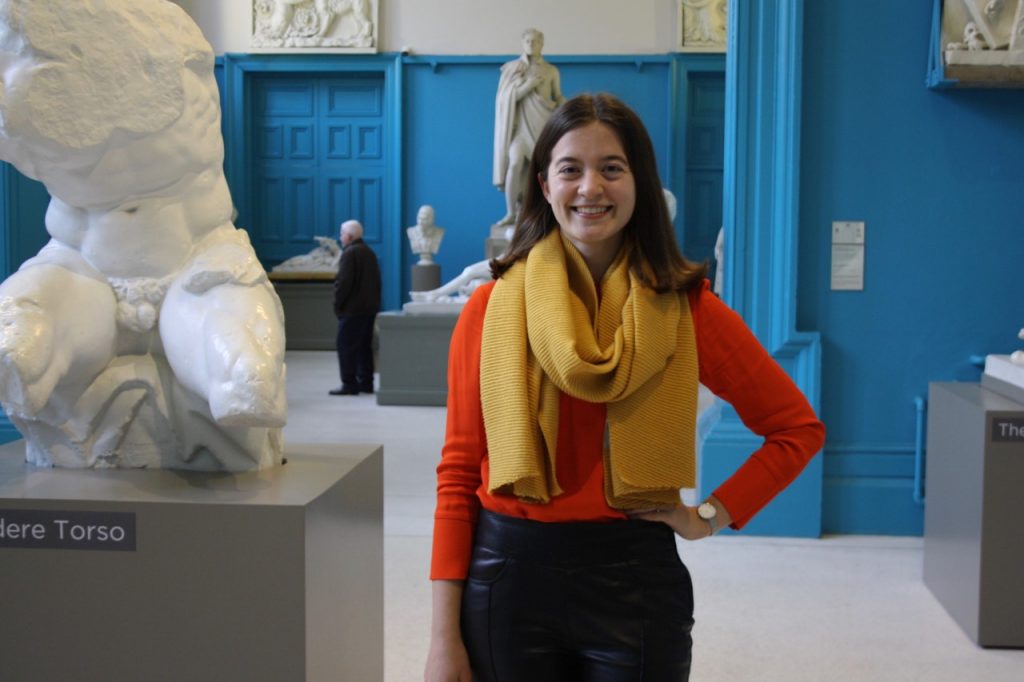
Abbey Ellis, AHRC-Funded CDP PhD Researcher | School of Museum Studies, University of Leicester | Ashmolean Museum of Art and Archaeology, University of Oxford | Twitter @abbeyinmuseums
References
- Bilbey, D and Trusted, M, 2010. ‘“The question of casts” – collecting and later reassessment of the cast collections at South Kensington’. In Frederiksen, R and Marchand, eds, Plaster Casts: Making, Collecting and Displaying from Classical Antiquity to the Present. Berlin; New York: De Gruyter, 465-83.
- Nichols, M F, 2006. ‘Plaster cast sculpture: a history of touch’. Archaeological Review from Cambridge, 21(2), 114-30.
- Malone, P, 2010. ‘How the Smiths made a living’. In Frederiksen, R and Marchand, E, eds, Plaster Casts: Making, Collecting and Displaying from Classical Antiquity to the Present. Berlin; New York: De Gruyter, 163-77.
- McNutt, J K, 1990. ‘Plaster casts after antique sculpture: their role in the elevation of public taste and in American art instruction’. Studies in Art Education, 31(3), 158-67.
